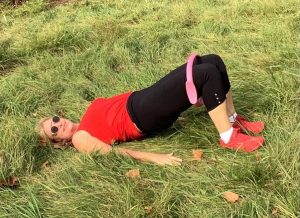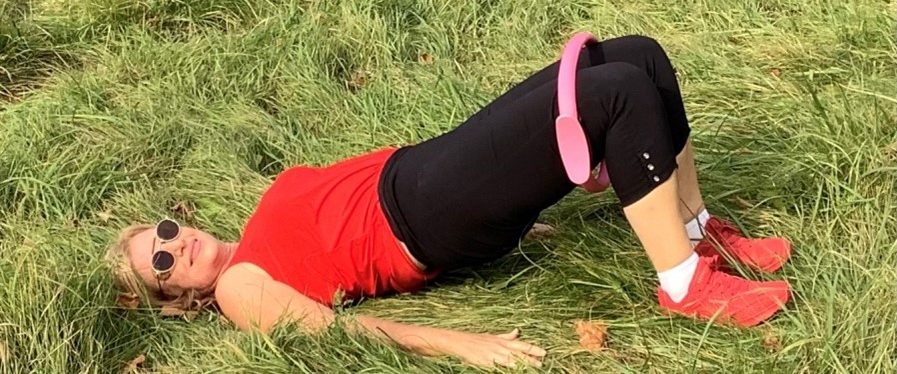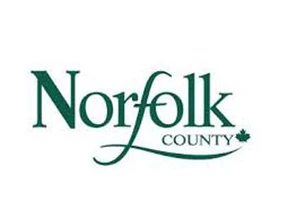Sometimes back pain comes from the back and sometimes it comes from the hip. Sometimes hip pain comes from the hip and sometimes it comes from the back. Like the chicken and the egg, the mystery of hip related back pain is difficult to unravel. Back pain is the second most common reason for workers to take time off, surpassed only by the common cold. Today we’re here to solve this very real problem and to give some insight as to the origins of pain you may experience and stretches that help reduce pain. Back pain can often be mistaken for hip pain because of their proximity to each other. The spine and hip share many groups of muscles. Your lower back and hip are codependent joints. A reduced range of motion in the hip can change forces on your low back. This means if the hip has limited rotation, the low back must compensate. How do you tell if the pain you are feeling is from the spine or the hip? The first indication that the low back pain you are feeling is actually hip related is pain in the groin on the affected side. Sometimes the pain will radiate into the front of the thigh but very rarely goes past the knee. If you suffer from hip pathology, you may also find it difficult to walk after sitting for a prolonged period of time. When you stand up, you will notice a fairly sharp pain and limp for the first couple of steps, but then the pain subsides.
Pain above the belt line is not considered a hip issue. The most common cause of lower back pain is a herniated disc that presses on nerves in the spinal column. You may have a herniated disc if pain is limited to your back, buttocks, or hip.
Sciatic pain often goes down the back of the hamstring, past the knee, and to the outside or back of the calf. It worsens with sitting or bending and often improves when standing or walking. It all depends on where the pain is shooting from. If pain starts in the buttocks and shoots down the back of the leg past the knee to the ankle, that is most likely a pinched nerve. Clients with a pinched nerve in the back often cannot lie down flat and will have use a recliner to feel comfortable at rest. If you think you have a herniated disc, be sure to consult a physician.
If you are experiencing hip related back pain, the first muscle group to consider is the hip flexor muscle or iliopsoas. The iliopsoas is made up of two separate muscles, the iliacus and the psoas. They run from the front of the lumbar spine and hip bone (ASIS) to the front and top of the femur. When you sit, your hip flexors are short, or contracted. When your hip flexors tighten, they can tug on the pelvis, pulling it forward into an anterior pelvic tilt. This change in posture forces your hip and back muscles to work overtime and places a lot of pressure on the low back. When feeling this type of strain it is important to consciously connect ribs to hips in front by engaging or bracing your abdominal muscles.
Tight hip flexors reduce your hips ability to extend while standing or walking. The spine may compensate for this lack of extension, putting extra pressure on the lumbar spinal vertebrae and discs and causing pain. This means every step we take slowly erodes our spine.
There is another muscle that is often overlooked when considering hip related back pain. The Sartorius is the longest muscle in your body, stretching from the front of the hip to the inside of the knee. It operates on two joints, the hip and the knee. When we are lifting our foot to tie our shoe the Sartorius is the key player. A tight sartorius can cause acute discomfort at the front of the pelvis. Just like the iliopsoas, it can shorten while sitting, which results in chronic dysfunction. The downward pull of the Sartorius on the hip has the potential to cause stress and impingement in the lumbar spine. The Sartorius crosses at the knee, and therefore can be a cause of pain inside of the knee.
To accomplish long term relief, we must work on improving our flexibility and strength for the hips.
Lying Hip Flexor
Start by lying on your stomach propped up on your elbows. Next bend one leg and imagine you are squeezing a tennis ball behind your knee. Next place more weight on the front of the hip on the side that the leg is bent. Now think about lengthening the knee away from your shoulder lengthening the front of the hips. You can enhance this stretch by placing a pillow under the bent knee.
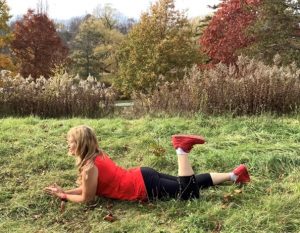
Sartorius Stretch
You may be able to reach back and hold your ankle. If not a stretch band, strap belt, or yes, even a dog leash can help. Place a strap around the foot or ankle. Body positioning is the same as the hip flexor stretch above, with the enhancement of a gentle pull on the strap to lengthen tight quad muscles. Hold for 30 second and repeat 2x time.
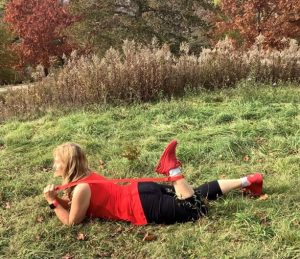
Wide Knee Sway
Start this exercise lying on your back with knees bent and feet wide. Let the knees fall to one side trying to let the top leg release towards the floor. Hold for 30 seconds each side.
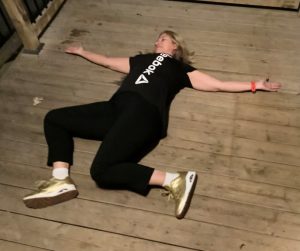
Hip Bridge: Start by placing a belt or Pilates ring above the knee so knees are hip width apart. Engage the abdominal muscles, squeeze the buttocks and press against the belt as you lift your hips. Hold for a count of five. Repeat 5-15x day
